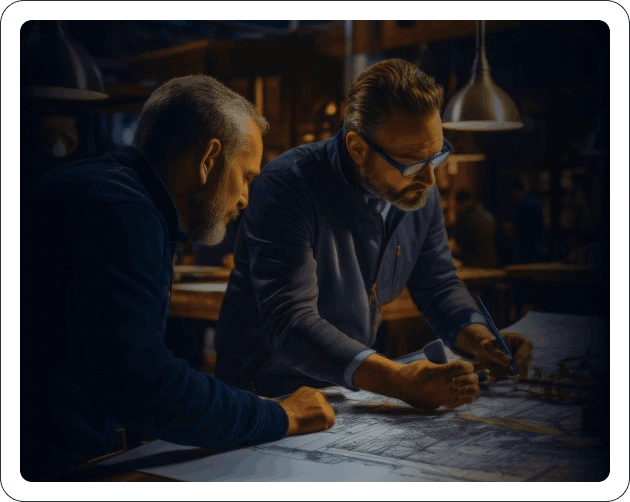Introduction: The Critical Role of Human Factors in Industrial Safety
In the high-stakes world of energy, chemicals, and manufacturing, we spend millions on engineered safeguards, thick steel pipes, automated shutdown systems, and complex relief valves. Yet, despite all that technology, a huge percentage of serious industrial accidents still involve a component of human action or error. This is where human factors in industrial safety become the single most important element in your risk strategy. We’ve successfully engineered the process, but we haven’t always adequately engineered the human interaction with that process. Moving beyond compliance means recognizing that people are not just sources of error; they are the most flexible and crucial layer of defense.
Understanding Human Factors in Safety
What exactly are human factors in safety? It’s the science of how people interact with the systems, tools, equipment, procedures, and environments around them. It draws on fields like psychology and ergonomics to understand why people behave as they do, why they make mistakes, and how to design systems to minimize those mistakes.
In an industrial context, the focus is on two main areas:
- System Design: Poor interface design, confusing alarms, difficult-to-reach controls, or poorly written procedures are all design flaws that induce error.
- Performance Shaping Factors: These are the conditions that affect a person’s ability to perform safely. Factors such as fatigue, high workload, inadequate training, and communication failures significantly increase the likelihood of a major incident.
Addressing human factors in process safety means looking past the individual who made the mistake and questioning the system that set them up for failure. Was the shift too long? Was the procedure accurate? Was the control panel legible?
Building a Strong Safety Culture
A strong workplace safety culture is the bedrock upon which all human factors in industrial safety mitigation efforts rest. Culture is what people do when no one is watching; it’s the shared values, beliefs, and behaviors regarding risk within an organization.
The most vital ingredient here is psychological safety in the workplace. This is the belief that you won’t be punished or humiliated for speaking up with ideas, questions, concerns, or mistakes. If an operator sees a potential hazard or realizes they made a near-miss error, they must feel completely safe reporting it, even if it delays production. When psychological safety in the workplace is low, people hide mistakes. When mistakes are hidden, the organization cannot learn, and the next accident becomes almost inevitable.
The importance of safety culture in the workplace goes beyond simple adherence to rules; it fosters a continuous learning environment where errors are treated as data points for system improvement, not reasons for blame.
Suggested Read: Sustainability in the Process Industry
Assessing and Mitigating Human Factor Risks
To truly tackle human factors, you must measure them. You can’t fix what you can’t see.
Effective risk mitigation begins with specialized tools and assessments:
- Task Analysis: This involves observing workers performing critical tasks to understand the difference between the written procedure and how the job is actually done. This highlights where procedures are confusing or impossible to follow safely.
- Human Reliability Analysis HRA: This technique, often integrated into formal risk studies, attempts to quantify the probability of human error in specific scenarios. This helps engineers design better safeguards to protect against likely errors.
- Safety Culture Assessments: Using validated safety culture assessment tools like surveys, interviews, and focus groups, companies can objectively measure employee perceptions regarding management commitment, communication effectiveness, and fairness in disciplinary action. The results clearly highlight gaps in the workplace safety culture.
Mitigation then involves targeted changes: redesigning confusing control interfaces, revising overly complex procedures, improving operator training, and implementing robust fatigue management programs. These are all essential industrial safety best practices.
Best Practices from High Risk Industries
Industries with the highest inherent risk, like aviation, nuclear power, and offshore oil and gas, have developed sophisticated strategies that inform modern industrial safety best practices.
- Just Culture: This practice makes a clear distinction between human error (a lapse in attention), at-risk behavior (taking an unnecessary shortcut), and reckless violation (a deliberate disregard for safety). While violations are punished, simple errors are treated as opportunities to find system failures, reinforcing psychological safety in the workplace.
- Procedural Challenge and Adherence: They enforce strict procedural adherence but couple it with an explicit requirement for workers to challenge procedures that are unsafe, unclear, or incorrect. The focus is on the spirit of the rule, not just the letter.
- Non-Technical Skills Training: Concepts like Crew Resource Management, adopted from aviation, train teams on communication, leadership, and decision-making skills. These non-technical skills are crucial for managing high-stress events and preventing incidents that stem from poor teamwork. These elements are key to sustaining the importance of safety culture in the workplace.
Suggested Read: Digital Transformation in the Utilities and Power Industry
Ingenero’s Approach to Human Factors and Safety Culture
At Ingenero, we recognize that true process safety is achieved when world-class engineering meets world-class operations. Our services go far beyond simple relief device calculations and regulatory paperwork. While we have validated over one hundred thousand relief devices and conducted thousands of critical safety studies like HAZOP and QRA, we understand that these engineered barriers are the last line of defense. The human factors in process safety are the first.
Our approach integrates human factors considerations directly into our safety consulting and risk analysis services:
- Integrated Risk Analysis: We use advanced risk assessment techniques that realistically assess the likelihood of human error as an initiating event. We analyze the specific performance shaping factors at your site to ensure a truly reliable system.
- Operational Readiness: We partner with clients to develop and validate operating procedures, ensuring they are clear, concise, and aligned with optimal human factors in safety principles before startup. This drastically reduces the likelihood of induced error.
- Custom Safety Management Systems: Our consultancy helps enhance your workplace safety culture by improving your Safety Management System. We focus on areas like incident investigation training, ensuring that root cause analysis thoroughly examines organizational and human factors, not just individual blame.
By combining our deep technical competence in pressure relief systems and process design with a strong focus on organizational safety culture, Ingenero delivers comprehensive industrial safety best practices that protect both people and assets.
Suggested Read: What Is Risk Assessment in Safety
Conclusion
The evolution of industrial safety is moving beyond compliance checklists and passive engineering. The next leap in performance and risk reduction lies in mastering the human element. By understanding the deep science behind human factors in safety, prioritizing psychological safety in the workplace to foster open reporting, and consistently using advanced safety culture assessment tools, organizations can stop reacting to accidents and start building truly resilient operations. The continuous commitment to improving human factors in process safety is not just an expense; it is the most crucial, high-leverage investment you can make in the safety and profitability of your future.




